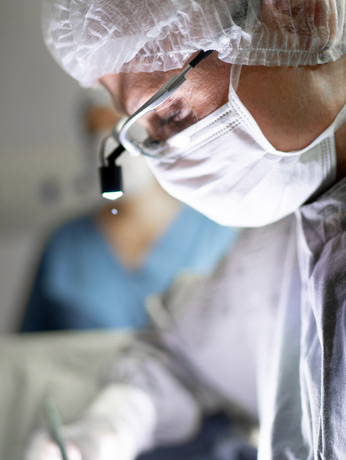Beverly Hills Nasal Surgery
Beverly Hills nasal surgery, also known as rhinoplasty, is one of the most common types of plastic surgery. It’s done to change the shape and appearance of the nose.
Why Patients Undergo Beverly Hills Nasal Surgery
A rhinoplasty can help repair the nose after an injury, alleviate problems breathing through the nose, correct birth defects, or improve the appearance of the nose.
During a rhinoplasty, a surgeon can make the following adjustments to the nose:
- Change the size
- Change the angle
- Straighten the bridge
- Reshape the tip
- Narrow the nostrils

Rhinoplasty done to correct a breathing impairment can be performed on patients of all ages, but patients who would like to improve the appearance of their nose should be at least 18 years of age.
Risks of Rhinoplasty
Patients undergoing rhinoplasty face the following risks:
- Nosebleeds
- Numbness in the nose
- Asymmetry of the nose
- Scars
- Difficulty breathing
- Need for a second surgery (revision rhinoplasty)

How to Prepare for Beverly Hills Nasal Surgery
During a consultation, a rhinoplasty surgeon will review the patient’s medical history, ask questions about current medications and medical conditions, and perform a physical exam. The patient’s nose will also be photographed from various angles to help the surgeon assess the long-term results of surgery. The surgeon may also refer to these photographs during surgery.
Surgeons typically require patients take the following steps in preparation for rhinoplasty:
Patients will also need to make arrangements for a driver to take them home after surgery.
Rhinoplasty may be performed in a hospital, surgeon’s office, or an outpatient surgical facility.
Once the patient is ready for the procedure, they will be given medication to ensure they are comfortable during surgery. They may receive intravenous sedation or general anesthesia, depending on how extensive the changes will be.
Once the patient is sedated, the surgeon will make the proper incision(s) to help uncover the bones and cartilage that will need to be adjusted. Next, the surgeon will make the necessary adjustments, whether that is removing bone or cartilage, correcting a deviated septum, or both. Once the changes have been made, the surgeon will re-drape the nasal skin and tissue, and close the incisions. The entire procedure may take between one to two hours.
Some patients will need splints and gauze packing to support the nose for a few days after surgery. This will help ensure the nose heals properly.
After surgery, patients will be monitored in the recovery room for a few hours. If there are no apparent complications, they will go home later that day. Patients who have undergone complex rhinoplasty may need to stay in the hospital for a day or two.
Patients will receive special instructions for activities they should avoid during the recovery process. These may include:
- Running, swimming, and other strenuous activities
- Blowing their nose
- Excessive chewing
- Laughing, smiling, and other facial expressions that require significant movement
- Vigorously brushing their teeth
- Pulling clothing over their head
- Resting eye/sunglasses on their nose
- Excessive sun exposure
